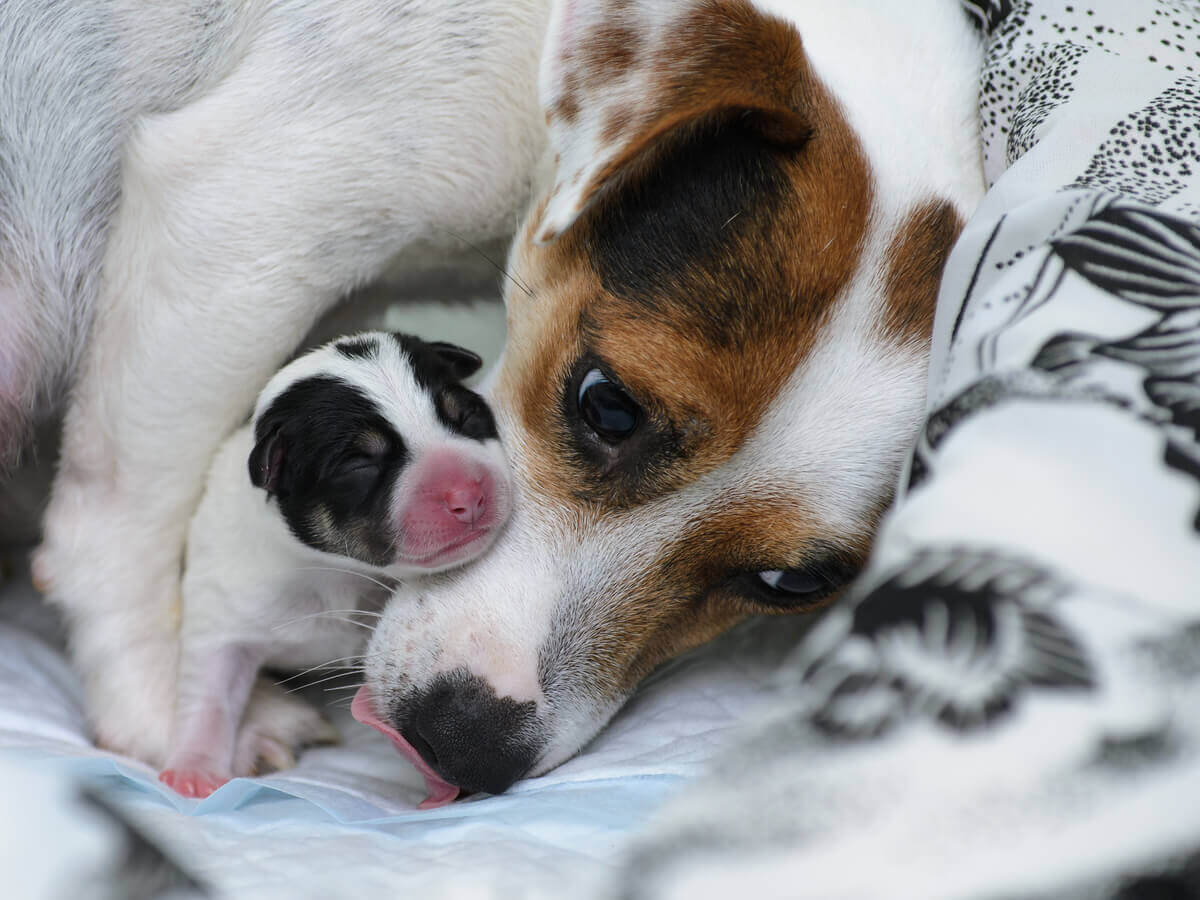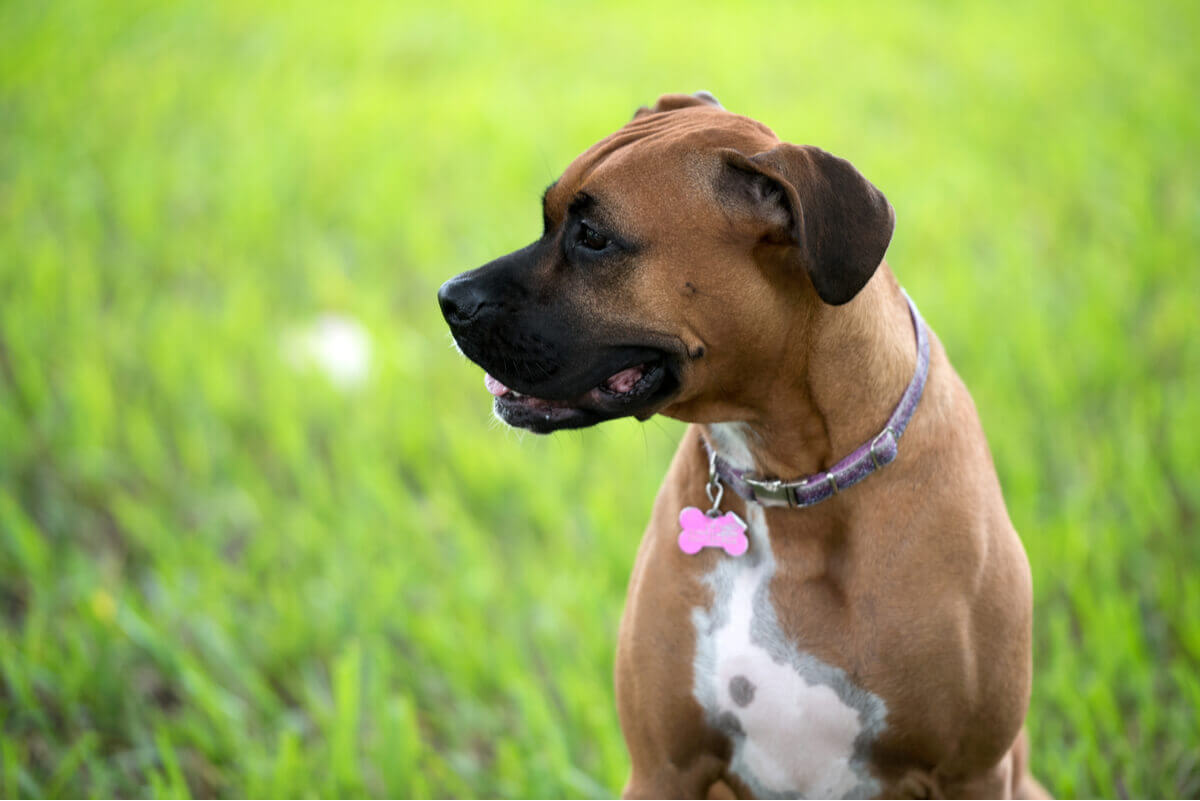What Do I Do if My Dog in Heat Won't Stop Crying?

Each dog experiences heat in a different way and you may find that some of them can’t stop crying during this period. It’s important not to lose patience and try to help her within the possibilities that are within your reach because reprimanding an animal for her emotions is never an option. To do this, the first thing is to know in detail about the estrous cycle of this species and how it affects the behavior of females. In this article, you can find all the information you need, as well as tips to alleviate the character of your canine companion. Keep reading to find out what to do if your dog in heat won’t stop crying.
The estrous cycle in dogs
Bitches have their first heat (estrous) between 6 and 12 months of age. The estrous period occurs every 5 or 9 months, depending on each dog, and is divided into the following 4 phases:
- Proestrus: Lasts from 9 to 27 days, depending on the animal. This is the period in which the animal expels bloody discharges from the vulva, which is inflamed. The males are attracted to the bitch, but she doesn’t respond to them. A peak of estrogen is produced in her body to develop the ovarian follicle.
- Estrous: This ovarian follicle releases a functional egg. During this phase, the bitch is receptive to reproduction, although signs of oestrus will be a little less obvious to the naked eye.
- Estrogen drops to give way to a peak in progesterone, which is the hormone that prepares the uterus for pregnancy if the bitch becomes pregnant. If not, it will drop again to allow anestrus to take place.
- Anestrus: This is a period of reproductive quiescence, i.e. sexual inactivity. This phase lasts between 130 and 150 days and ends when the next cycle begins.

My dog in heat won’t stop crying, why?
Now that you know about the estrous cycle of canids step by step, you can easily deduce that these hormonal variations have effects on the mood of the dog. Specifically, this is how hormone concentrations affect the animal:
- Estrogen: Peaks and valleys of this hormone correlate with states of anxiety and depression.
- Progesterone: Basal levels of this hormone help combat anxiety and fatigue. That’s why, when they fall at the end of the breeding season, your dog may be in a depressed state of mind and that’s why she won’t stop crying.
Although hormone concentration plays a relevant role in the animal’s emotions, it’s not the only factor capable of affecting her mood. It could be that the bitch is seeking attention from her guardians when she feels anxious or sad, and attending to that behavior can reinforce crying and whining.
Does this mean that you should ignore the dog when she cries? Not necessarily. In the next section, we’ll tell you how to proceed in this situation.
What can I do if my dog in heat won’t stop crying?
In addition to a poor mood, your dog may show signs such as drowsiness or loss of appetite during the reproductive receptivity stage. There are several ways to help lift her mood without risking her crying every time she wants attention. Here are a few tricks to do just that:
- Spend time with her daily: Play with her and give her affection so she feels loved, but also provide mental stimulation so she can play alone. Keeping her entertained will make it easier for her to get through the depressive period without crying.
- Give her more nutritious food when she’s in heat: If your dog is eating less, provide her with food richer in essential nutrients. You can also improve the attractiveness of her food with broths, tins of wet food, or some fruit or vegetables that she likes.
- Exercise your dog: If your dog shows signs of restlessness and anxiety, taking her for a long walk, playing, and running are good exercises to release energy and make her feel better.
- Natural herbs: Chamomile, valerian, and St. John’s wort act as natural tranquilizers for dogs. You can make an infusion with them or buy them in concentrate form. Consult your vet to find out the exact dosage your pet needs.
- Alternative therapies: Aromatherapy, Bach flower remedies, and Reiki are now being used extensively as supplements. These are very effective in helping your dog to keep her temperament balanced during her periods of heat. However, it’s important to consult your trusted veterinarian before enrolling your furry one in a new therapy.
Does spaying improve the behavior of a dog in heat?
Spaying has many advantages for both you and your dog: It prevents unwanted pregnancies, serious infections such as pyometra, and cancer of the reproductive tract. However, if the animal is spayed without removing the gonads, the hormonal cycles will continue to occur, so it will alter the mood and behavior of the dog in the same way.

The last recommendation is to watch for other symptoms along with this negative mood in your dog. Excessive bleeding, lethargy, purulent vaginal discharge, or aggressiveness are signs of an underlying health problem. At these times, it’s vital that you go to the vet, because if it’s a serious condition, your dog’s life may be in danger.
All cited sources were thoroughly reviewed by our team to ensure their quality, reliability, currency, and validity. The bibliography of this article was considered reliable and of academic or scientific accuracy.
- Sánchez, A. E. (1999). Factores que afectan el intervalo interestral en la perra domestica (Canis familiaris). Una revision. Revista Científica de la Facultad de Ciencias Veterinarias, 9(6), 532-537.
- Céspedes, R., Pradere, J., Bermúdez, V., Díaz, T., Perozo, E., & Riera, M. (2006). Irrigación arterial y venosa del útero y los ovarios de la perra (Canis familiaris) y su relación con la actividad ovárica. Revista Científica, 16(4), 315-324.
- Stornelli, M. C., Gimenez, F., Tittarelli, C. M., Savignone, C. A., Sota, R. L. D. L., & Stornelli, M. A. (2006). Inducción de ciclos estrales en la perra: Actualización bibliográfica. Analecta Veterinaria, 26.
- Duarte, L., Sánchez, F., & Ortega, C. (2014). Desarrollo de piómetra y su relación con ovarios poliquísticos en hembras caninas. Spei Domus, 10(20), 17-22.
This text is provided for informational purposes only and does not replace consultation with a professional. If in doubt, consult your specialist.